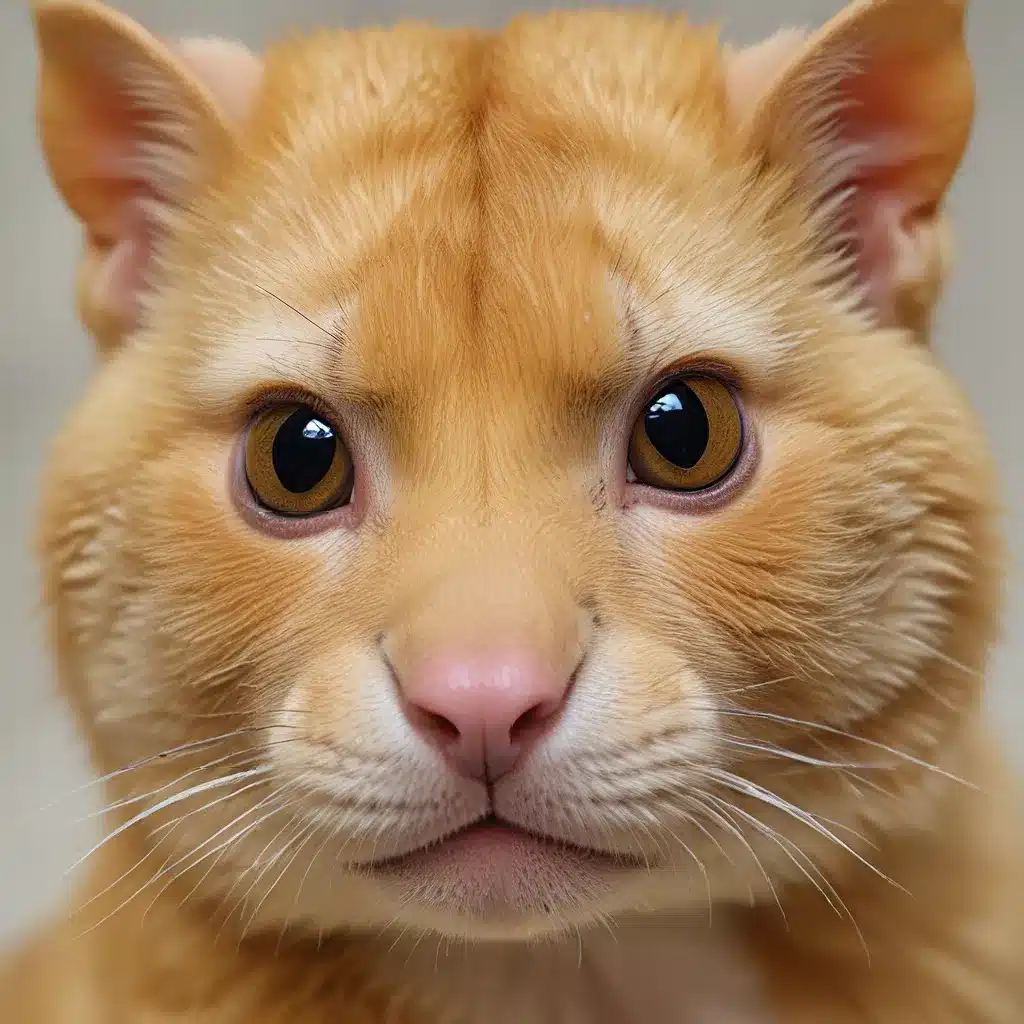
Exotic Pets: A Window into the Wondrous Unknown
You know, when I was just a little tyke, I had my first eye-opening encounter with the extraordinary. It happened in a small pet shop, where my dad had taken me along for one of his regular visits. As I wandered the aisles, mesmerized by the usual assortment of furry and scaly creatures, something caught my eye that stopped me dead in my tracks.
There, in a large aquarium at the center of the store, was the most captivating creature I had ever laid eyes on. It was a tarantula – a Brachypelma smithi, or Mexican redknee, to be precise. This striking arachnid, with its vibrant colors and imposing size, was like nothing I had ever seen before, outside of those old black-and-white monster movies. In that moment, my young mind was completely blown, and a lifelong fascination with exotic pets had begun.
As I would learn years later, that chance encounter was just the first step in a journey that would eventually lead me to become a passionate collector of tarantulas and other remarkable creatures. And through my own experiences, I’ve come to understand that these exotic pets, often misunderstood and feared, can be truly extraordinary companions…if you’re willing to open your mind and heart to the wonders they have to offer.
Debunking the Myths: Exotic Pets as Loving, Low-Maintenance Companions
Now, I know what you might be thinking: “Exotic pets? Aren’t those dangerous and high-maintenance?” Well, let me tell you, that couldn’t be further from the truth. In fact, many exotic species make for some of the most low-key and rewarding pets you could ever hope to have.
Take tarantulas, for example. When most people picture these arachnids, they envision aggressive, venom-dripping monsters that are just waiting to pounce. But the reality is, the vast majority of tarantula species have remarkably docile temperaments and produce venom that’s no more potent than a bee sting. And the care requirements? Practically nonexistent. These amazing animals need only a modest enclosure, some substrate, and the occasional cricket or mealworm – that’s it. No expensive equipment, no complicated setups, no vet visits. It’s a level of simplicity that puts even the most low-maintenance feline to shame.
And the diversity! Did you know there are over 900 different species of tarantulas, each with its own unique traits and captivating characteristics? From the vibrant blues and greens of the arboreal species to the stunning reds and oranges of the terrestrial varieties, these creatures come in a mind-boggling array of shapes, sizes, and colors. It’s like having a living, breathing art exhibit right in your own home.
Conquering Fears, Cultivating Connections
Of course, I understand the hesitation that many people feel when it comes to exotic pets. After all, arachnophobia is one of the most common phobias out there. But you know what? That’s exactly why I believe these animals can be so rewarding. Conquering that fear, gaining a deeper understanding and appreciation for these misunderstood creatures, can be a truly transformative experience.
As I’ve seen in my own life and in the lives of countless other enthusiasts, keeping a tarantula or other exotic pet can be a powerful antidote to lifelong fears and phobias. There’s just something about the process of caring for these animals, of observing their fascinating behaviors and intricate adaptations, that can slowly but surely erode those deep-seated anxieties. And the sense of accomplishment and newfound respect that comes with it? Priceless.
But it’s not just about overcoming fears. For me, and for so many others, exotic pets have become a source of genuine connection and joy. There’s something captivating about watching a tarantula hunt, or marveling at the intricate molting process. It’s a window into a world that is at once alien and familiar, and it sparks a sense of wonder and curiosity that can be incredibly rewarding to explore.
A Responsibility and a Privilege: Caring for Exotic Pets
Of course, with the joys of exotic pet ownership come certain responsibilities. These aren’t your typical furry or feathered companions, after all. They’re wild creatures, and they deserve to be treated with the utmost care and respect.
That means doing your homework, understanding the specific needs and behaviors of the species you’re interested in. It means providing a safe, appropriately sized enclosure, a proper diet, and the right environmental conditions. And it means always prioritizing the wellbeing of your pet, even if that means resisting the urge to handle or interact with them in ways that could be stressful or dangerous.
As I’ve learned through my own experiences, exotic pet ownership isn’t for the faint of heart. It requires a certain level of dedication, patience, and willingness to learn. But for those who are up for the challenge, the rewards can be truly extraordinary.
Embracing the Extraordinary: A Call to Action
So, if you’re someone who’s been intrigued by the idea of bringing an exotic pet into your life, I encourage you to take the plunge. Discover the wonders of tarantulas, snakes, or even small mammals like sugar gliders or fennec foxes. Immerse yourself in their world, and let them open your eyes to the incredible diversity and complexity of the natural world.
And who knows? You might just find that your new exotic companion becomes a cherished member of your family. After all, at Golden Exotic Pets, we believe that every creature deserves a loving, forever home. So why not let your heart and your curiosity guide you to the extraordinary pet that’s waiting to become your next best friend?

